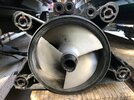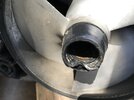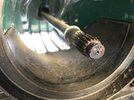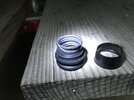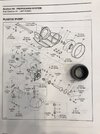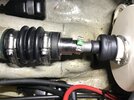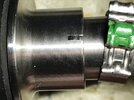bigJake, in my defense of doing things out of order in removing the drive shaft, remember that I never intended to remove the drive shaft and only removed the pump assembly by accident. Things just sort escalated after that. I blame miki.

I initially tried putting the pump assembly back in, but found that the drive shaft was drooping just enough to not allow the jet pump assembly to be installed back onto the studs. I grabbed a piece of string and used it as a cradle so I could lift the drive shaft the little bit needed for it to go into the jet pump assembly.
I did not appreciate just how much force was going to be needed to move the steel top hat aft in order to access that locking o-ring. So I resorted to using a scrap block of wood and a prybar, and even then it take a fair amount of force to move the top hat. I found out later that the two internal o-rings in the top hat was providing most of the resistance. In the pic below I have removed the locking o-ring from the drive shaft groove.
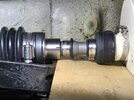
Almost there. In this pic the drive shaft has moved aft enough to come out of the PTO rubber boot. The locking o-ring has been removed and there is also enough room now to remove the top hat.

Success ! That was a bit of work to get to this point, but it will go much faster next time. Drive shaft splines still need cleaning.
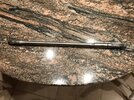
The drive shaft cleaned up nicely. The rubber bumper, which was the reason we removed the drive shaft, appears to be in good shape except that it has taken an impression from being forced into the PTO all these years. I’m tempted to swap the two bumpers around as the impeller side rubber bumper looks pristine.
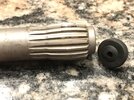
Since I took off the large clamp unnecessarily from the PTO rubber boot, I decided to take the opportunity to remove the rubber boot completely and clean out all of the old grease.
Now that I needed more grease to fill the PTO rubber boot, I decided to take the time to go to the Seadoo dealer 45 minutes away today. Shockingly, they did not have the Seadoo synthetic grease or the Seadoo E-TEC 2T full synthetic injection oil in stock. The parts guy was complaining that there is a bunch of stuff that they order that is not showing up in a timely manner, and that they are having a hard time keeping their shelves stocked.
I did not call ahead to see if the grease and injection oil was in stock. I’ve never experienced a Seadoo dealer being out of these kind of things in the 25 years we’ve had the GTX. Things are getting weird in the US supply chain.




